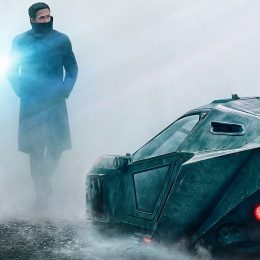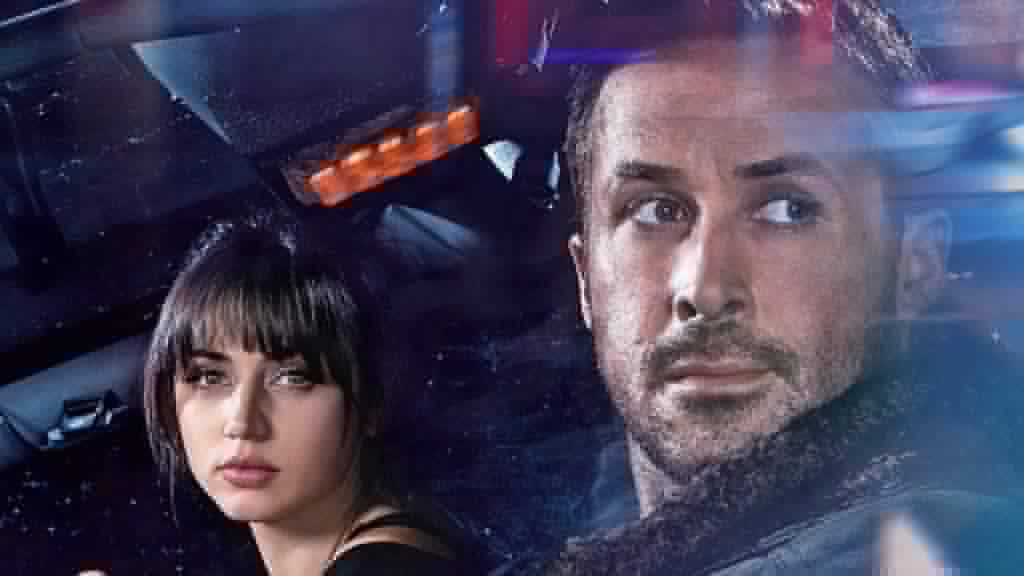Writers express their worldviews through genres, and science fiction is the most apt and malleable gateway for a writer’s expressions on policies, social issues and generalized norms. In 1982 Hampton Fancher employed this genre, combined with film noir, and wrote the screenplay for Ridley Scott’s critically acclaimed “Blade Runner.” 35 years later, Fancher and director Denis Villeneuve (“Arrival” 2016) have revamped Scott’s vision to reflect their new worldviews. Based upon “Blade Runner’s” science fiction themes, Villeneuve’s “Blade Runner 2049” inhabits a new atmosphere with an original narrative, but it is an unfortunately unrewarding and relatively unstimulating cinematic experience.
At press screenings for “Blade Runner 2049” Villeneuve asked anyone who was going to write about his film not to mention any details from the film’s plot. I will honor his request, and I shall not discuss the film’s specific plot points.
The film’s narrative approach separates “Blade Runner 2049” from other science fiction blockbusters. It is an investigative look at what defines humanity and the lies the world foolishly believes. Though “Blade Runner 2049’s” story covers a wide variety of concepts and social issues, the film’s narrative does not successfully interweave these concepts into a coherent worldview. This does not mean the film does not feature compelling scenes. The action sequences are unflinching, the romantic moments are awkward and abrupt, the dialogue is fascinating, and the story is intriguing, but these scenes do not feel connected. The film has good ideas but poor synergy.
This does not mean anyone who watches this film will dislike it. “Blade Runner 2049” reaches viewers on different subjective levels. The majority of the film’s enjoyment and cinematic experience comes from a viewer’s self-perceptions; how they read into the film’s ambiguous story and narrative themes. Perhaps “Blade Runner 2049’s” enjoyment will increase with each viewer’s return to the film, but if this is the case then less enthusiastic moviegoers should not spend their money on what is a genuine toss-up.
What makes “Blade Runner 2049’s” ambiguous story difficult to understand on a first viewing is the plot’s unnecessarily slow pacing. For some viewers this will be a welcome change from other recent releases. For other audiences this could be deterring. This is not to say all viewers who prefer fast-paced action films will detest this film’s slow pacing. What makes “Blade Runner 2049’s” slow pacing so noticeable, is that it is designed to deliberately stop the film’s action. As the plot is heading towards an answer to one of its multiple mysteries, the film slows down. When the plot is most engaging, is when “Blade Runner 2049’s” lethargic pacing becomes most apparent and, to some, annoying.
What keeps this story somewhat engaging and worth watching is its main protagonist, K. Officer K. is a Blade Runner charged with the task of hunting down and retiring replicants, artificially made humans. Ryan Gosling portrays this standout character with brazen charm and razor-sharp subtlety. Every look in his eyes; every twitch of his face; every curl of his mouth; every flare of his nostrils; every step he walks speaks K’s inner emotional conflicts and mental competence as the lead hero.
Accompanying Gosling’s performance are Ana De Armas as Joi, Robin Wright as Lieutenant Joshi, Sylvia Hoeks as Luv, and Jared Leto as Niander Wallace. Though all of these performers suit their onscreen personas, their line delivery and idiosyncrasies can become predictable and eventually uninteresting. In addition to this, the film’s characters have little depth, as they remain relatively unchanged from the start to the end. While these performers play their parts well, their character’s inert natures give them little room for exploration and discovery.
Along with this considerably immobile cast of characters, “Blade Runner 2049” is comprised of a vapid and tiresome atmosphere. While cinematographer Roger
Deakins provides shots with adequate composition, they have little variety. His shots seldom include camera movement and only depict one shade of color. There are no hue gradients in Deakins’ color pallet, so his shots feel lifeless and inactive.

The best element in this film’s visuals is its lighting design. It is awe-inspiring watching characters slowly cross a massive corridor, as a golden light illuminates their path each step they take. It is an impactful part of this film’s aesthetic, and it does not attract attention to itself.
However, an element that demands attention is this film’s score. Hans Zimmer, musical composer, tries to add energy to Deakins’ devoid scenes, but he does so with overbearingly loud drones, inconsequential ethereal synthesizers and harsh bass drops. All of “Blade Runner 2049’s” atmospheric pieces give this film a unique look and feel, but make the film an unengaging experience that would be better watched on a home viewing screen.
Denis Villeneuve’s “Blade Runner 2049” features a top notch performance from Ryan Gosling and excellent lighting design, but its slow, unconnected story told through devoid images, stagnant color palettes, and inert characters makes this film an ultimately unrewarding cinematic experience.

